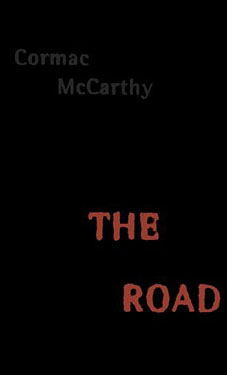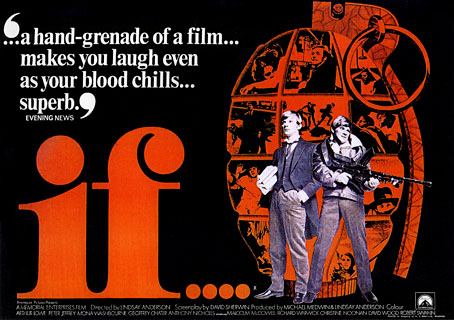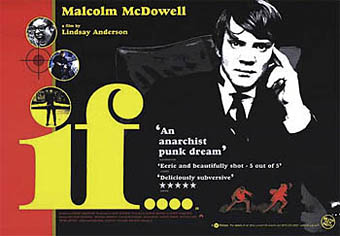Guernica by Pablo Picasso (1937).
• The legacy of Guernica (the event)
• Echoes of Guernica (the painting)
A journal by artist and designer John Coulthart.
Guernica by Pablo Picasso (1937).
• The legacy of Guernica (the event)
• Echoes of Guernica (the painting)
Björk‘s sixth studio album is released on May 7th and features
contributions from Antony Hegarty and Chris Corsano, among others.
Previously on { feuilleton }
• Trinity rendezvous
• Chris Corsano again
• Chris Corsano
• Jack Rose in Manchester
 So I finished The Road finally, relishing its ash-strewn bleakness at my own sluggish pace. It’s worth noting (since I missed the event) that McCarthy’s novel was awarded the Pulitzer Prize for best fiction earlier this month, and deservedly so, I’m sure. As if that wasn’t enough, we’re also awaiting the bizarre spectacle of the man who shuns interviews granting an audience to Oprah since The Road has been chosen for her latest book club title.
So I finished The Road finally, relishing its ash-strewn bleakness at my own sluggish pace. It’s worth noting (since I missed the event) that McCarthy’s novel was awarded the Pulitzer Prize for best fiction earlier this month, and deservedly so, I’m sure. As if that wasn’t enough, we’re also awaiting the bizarre spectacle of the man who shuns interviews granting an audience to Oprah since The Road has been chosen for her latest book club title.
It’s difficult offhand to think of another writer that can command critical and popular acclaim in this way, although it should be said that if Oprah’s book hordes are looking for an easy or a light read with this one they’re in for a shock. The Road is a dark and desolate tale that makes most contemporary horror novels look anaemic by comparison. That black cover design with its retreating, corroded type suits a story where the sun shines fitfully, if at all, and all is burned, ransacked or destroyed. This is also (as Beaumaris Books and others have noted) a work of speculative fiction—if not full-blown post-apocalypse SF—which is something the book world conveniently ignores. Science fiction has been offering up devastated landscapes like these for decades but for many of McCarthy’s readers this will be a new experience. The belated flush of attention won’t do anything to bring people to SF but it may enlarge the audience for McCarthy’s other work which can only be a good thing.
• John Clute examines The Road from an SF perspective
Previously on { feuilleton }
• Cormac McCarthy book covers
• Another masterpiece from Cormac McCarthy
• Cormac McCarthy’s venomous fiction
By an odd coincidence my work manifests in two different forms in Finland this month. Above is the Finnish reprint of ‘King Squid’ by Jeff VanderMeer, part of his City of Saints and Madmen fantasy novel which I designed as a self-contained work. SF magazine Tähtivaeltaja has produced this as a supplement to their latest issue and done a great job of maintaining the look of the original printing.
And in the music world there’s a new CD design for Finnish metal band Turisas. This is their second album, The Varangian Way, a concept affair that describes the journey taken by Viking explorers from the Gulf of Finland to Byzantium via the rivers of Russia. Very bombastic stuff, with choir and orchestra backing the band so it’s probably fitting that I again referenced (ie: swiped) the bloated sun from Bob Peak’s Apocalypse Now poster for the cover.
Previously on { feuilleton }
• The poster art of Bob Peak
• New things for April
• City of Saints and Madmen

Lindsay Anderson‘s masterpiece, If…., is finally given a DVD release in the UK in June. Anderson’s film—the dramatic resistance to authority by three boys at an unnamed British school—was made in 1968 but I didn’t get to see it until (as I recall) 1977. I was 15 at the time and feeling increasingly desperate and hidebound by school-life so this film was explosive in its psychological impact as well as its story (that grenade on the poster was very apt). Given my age and the year, I’m supposed to have cult yearnings toward the wretched Star Wars but it was If…. that made the lasting impression.

Poster for the 2002 re-release.
If…. was important for a number of reasons, not all of them obvious during that first viewing. I didn’t go to an all-boys public school (note for Americans: “public school” in Britain actually means an expensive, private establishment) but my grammar school had been an all-boys place a few years before I arrived. Some teachers wore gowns at assembly and many of the older teachers there were of a rigid, brutalist mindset exactly like the ones in Anderson’s film. Bullying was endemic, uniform rules were enforced to a degree that would make an army colonel proud and you stood out from the crowd at your peril; I had friends there but I hated every minute. So here comes young Malcolm McDowell on the television screen, effortlessly charismatic and insouciant in his first film role, portraying the ultimate Luciferan rebel, one who (as Anderson writes in the screenplay preface below) says “No” in the face of overwhelming odds. Reader, I identified so very much…. The famous ending (borrowed from Jean Vigo’s Zéro de Conduite) where Mick and the other “Crusaders” fire guns and throw grenades at the rest of the school was headily wish-fulfilling. (And given recent events, you’ll also see below that Anderson and screenwriter David Sherwin regarded that ending as metaphorical, not literal.)